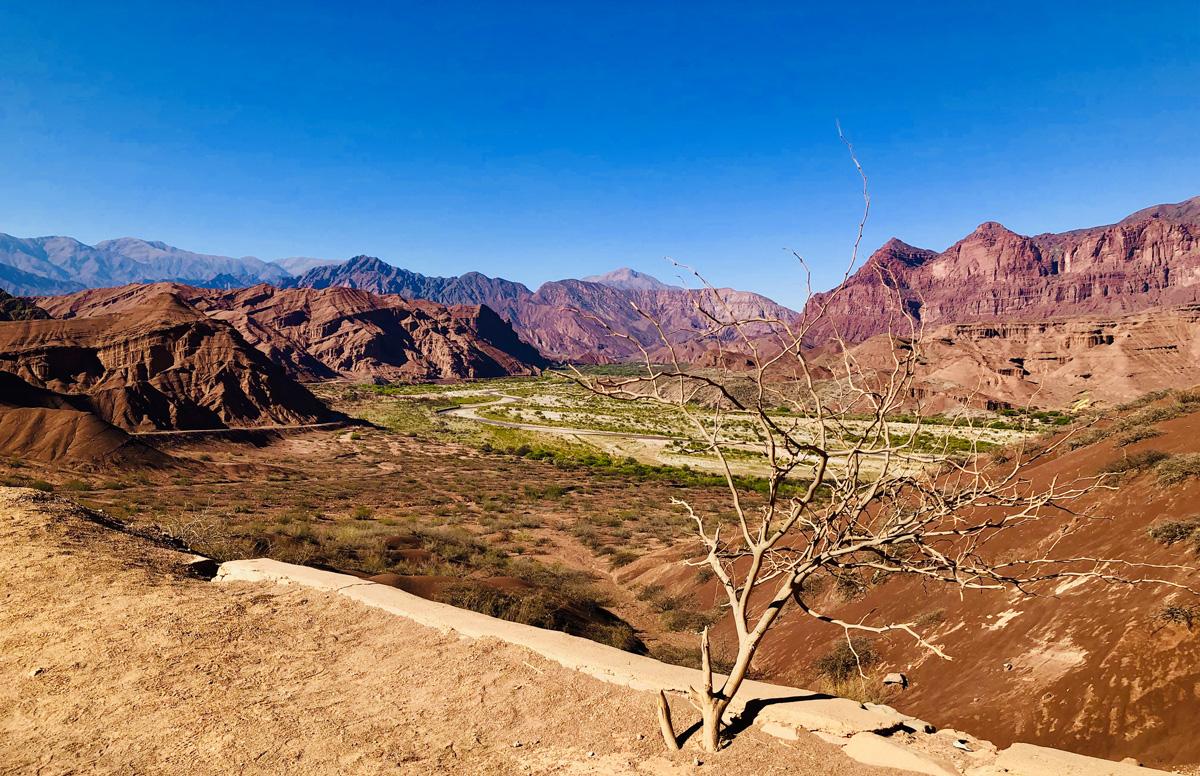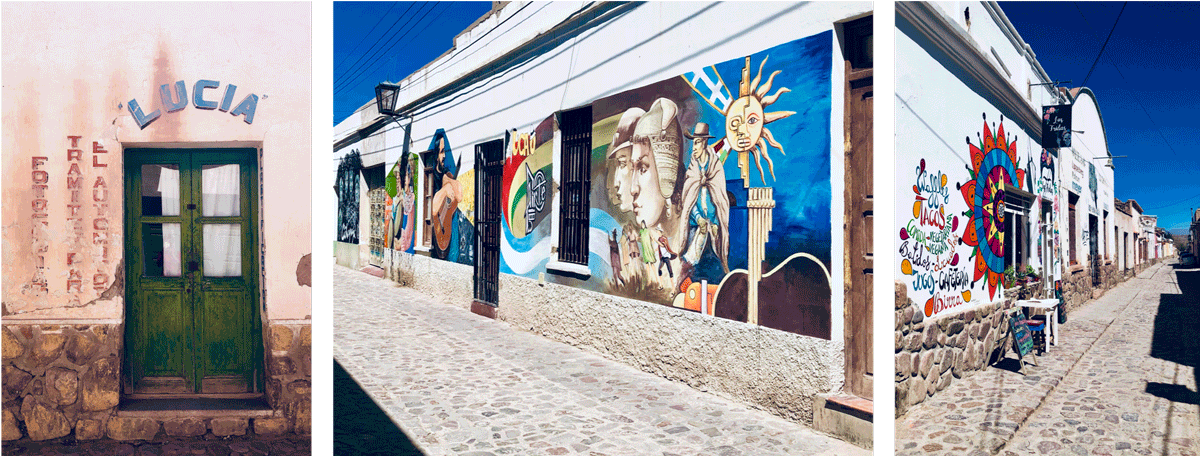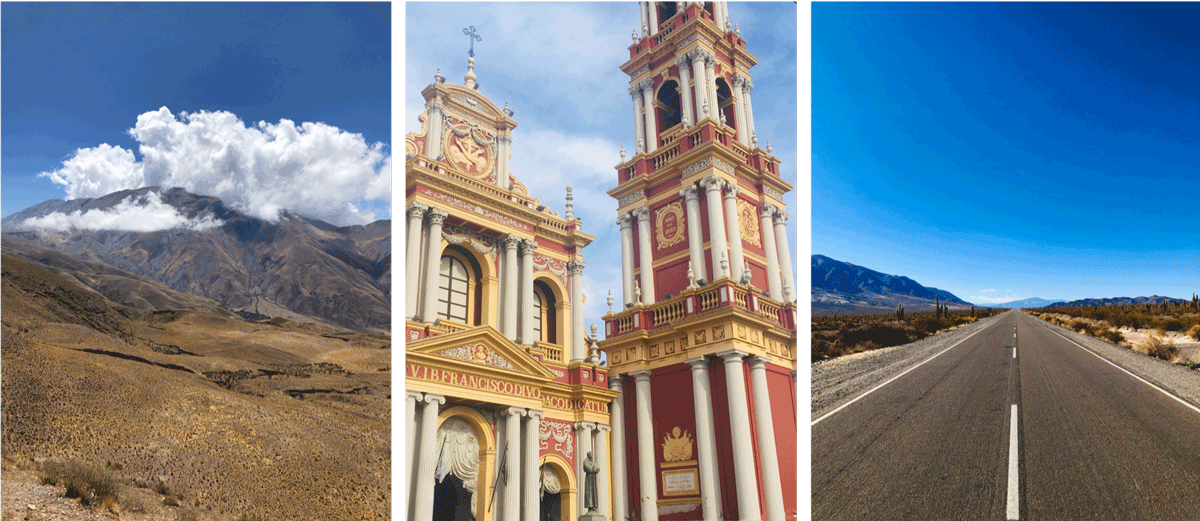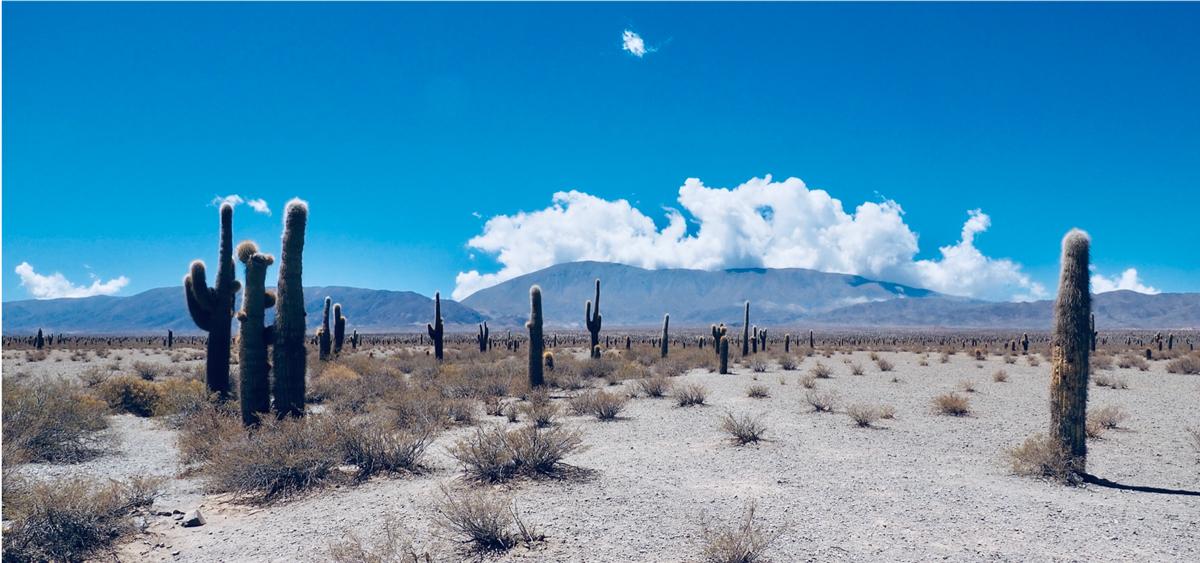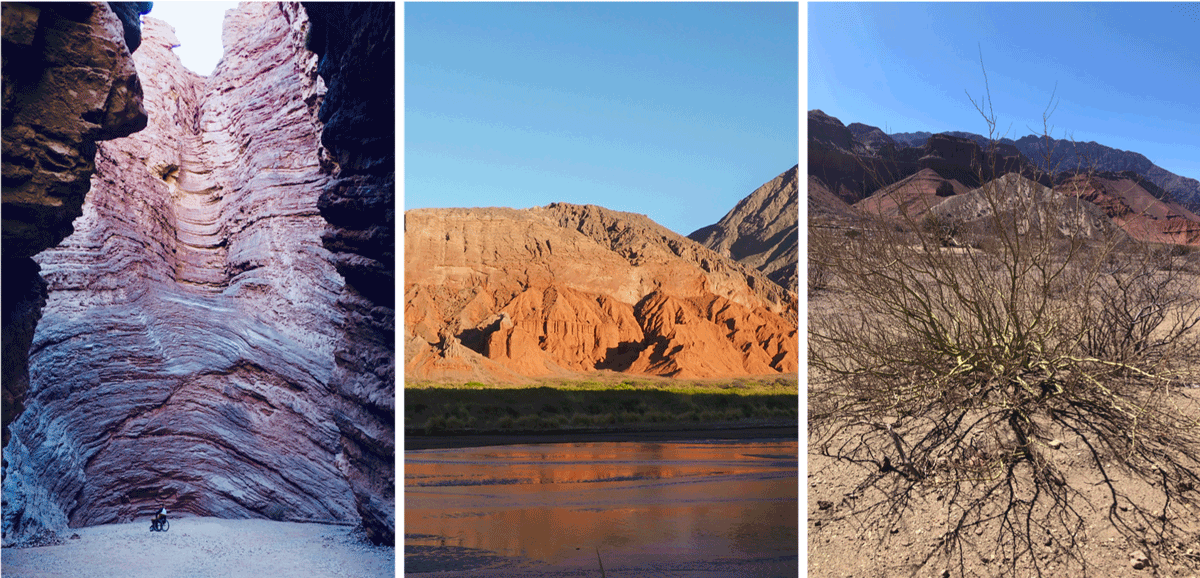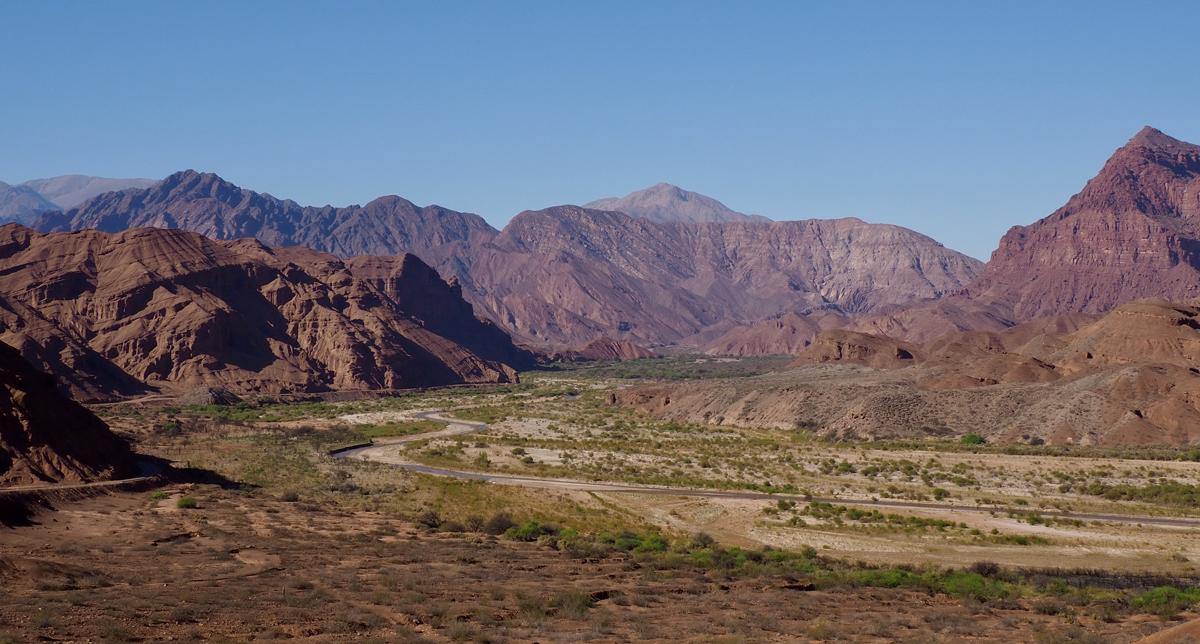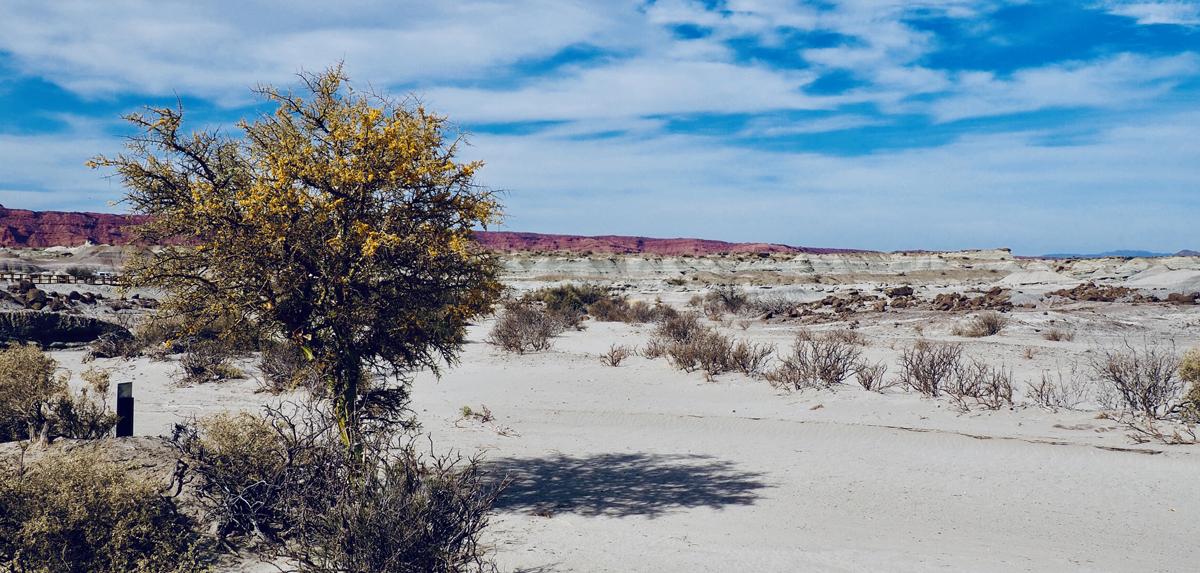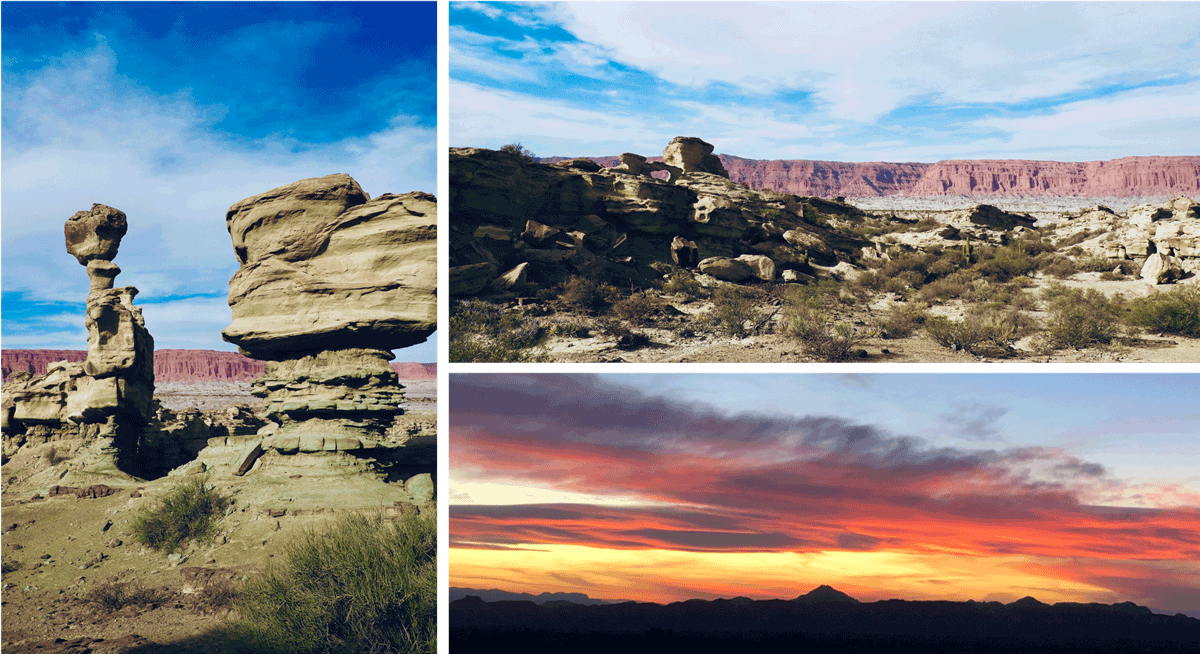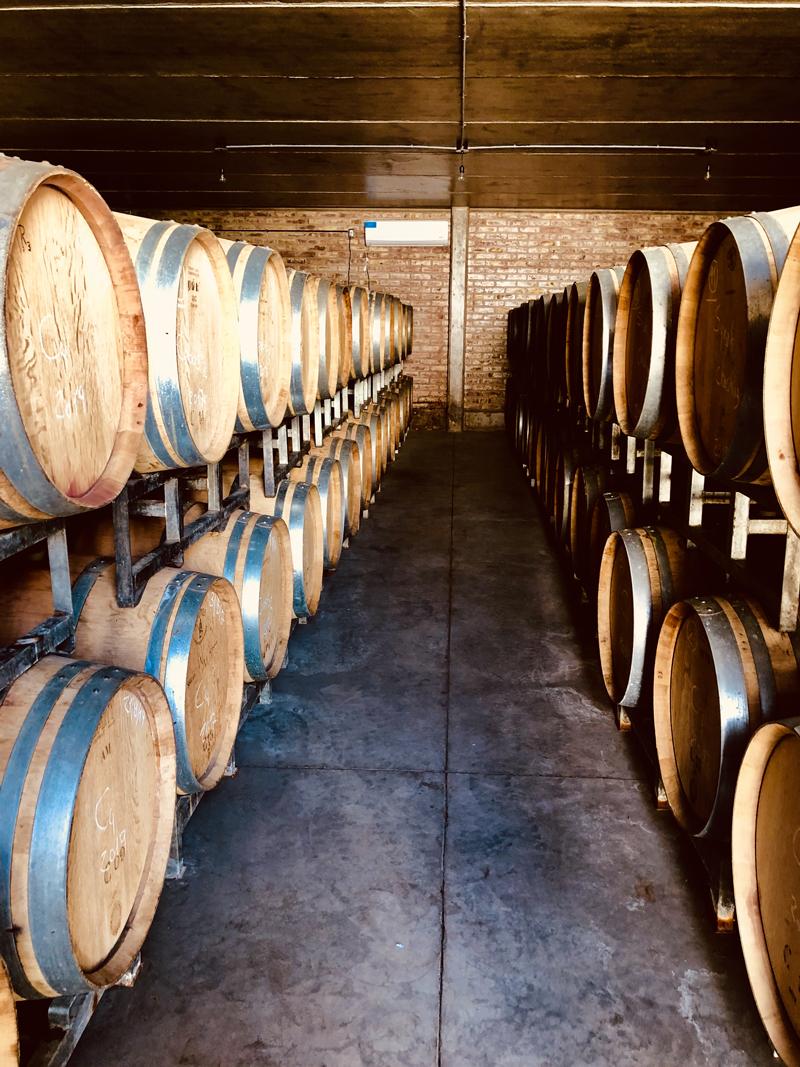Temps de lecture : 12 minutes
Résumé en images de nos 10 jours de roadtrip dans le Nord-Ouest argentin, de Tilcara à Mendoza !
Nous quittons San Pedro de Atacama de bon matin en direction de l’Argentine. Il nous faudra 6 heures de route sinueuse au cœur de la Cordillère des Andes pour parvenir à Tilcara, première étape de notre roadtrip de 10 jours dans le Nord-Ouest argentin, le long de la mythique Ruta 40.
Bon à savoir : économie et prix de la vie en Argentine
Comme à notre habitude, nous vous indiquons dans cet article les prix de nos logements et de nos activités… On préfère vous prévenir : en fonction de la date à laquelle vous nous lirez, ils pourront avoir changé du tout au tout ! Nous comprenons à notre arrivée que l’Argentine traverse une période économique particulièrement difficile. En quelques années, le Peso argentin (ARS) a perdu plus de la moitié de sa valeur face au Dollar et à l’Euro ! Lorsque nous y sommes, 1 EUR vaut environ 64 ARS… En fonction des résultats des élections présidentielles qui se tiennent quelques semaines plus tard, on lui prédit une valeur autour de 90 à la fin de l’année. Si rien n’est certain, le degré de confiance reste un bon indicateur de la volatilité de la valeur monétaire dans le pays…
Pour faire face à ces variations, les argentins s’adaptent : les prix varient donc de manière conséquente d’une année à l’autre ! Nous découvrons avec étonnement que tous nos guides, pourtant récents, donnent des prix erronés, passant parfois du simple au double… Sans que nous nous en réjouissions (la situation témoigne de vraies difficultés économiques pour les argentins), ces dépréciations rendent néanmoins notre séjour dans ce pays très peu coûteux…
Etape 1 : Tilcara (2 jours, 2 nuits) : une promenade à travers les âges
Au cœur des montagnes désertiques de la région de Jujuy, Tilcara est un village vivant et accueillant, dont la situation géographique est idéale pour explorer les alentours !
Infos pratiques
Où dormir ?
Malgré sa taille (2 000 habitants environ), Tilcara propose de nombreux hébergements, souvent simples (auberges, hostels, cabañas…) mais confortables !
Nous choisissons l’hébergement Lo de Lili, qui a l’avantage d’avoir une chambre accessible (bien que non aménagée) en fauteuil roulant… La seule de la ville d’après ce qu’on a pu voir ! Un hôtel très confortable et un super accueil de la part de notre hôtesse, on a beaucoup aimé (pour un prix très raisonnable : 25€ par nuit, sans petit-déjeuner) ! Seul inconvénient : il est situé en haut de la colline qui surplombe le village… Ca grimpe !
Où manger ?
On a eu un coup de cœur gastronomique à Tilcara : Arumi !
D’excellentes viandes, des spécialités argentines et un large choix de vins pour accompagner les plats… On a adoré l’Amalaya, un Malbec saltenien !
On recommande
Le village de Tilcara en lui-même est plutôt petit, et son centre encore plus ! Une fois que l’on a visité le marché de la place centrale, il faut s’éloigner un peu pour profiter du reste…
- La Pucará de Tilcara (2 à 3 heures)
La Pucará de Tilcara est une forteresse abritant un village, le tout construit il y a environ mille ans ! Une grande partie de ces ruines ont été restaurées et le site est aussi magnifique qu’instructif : on a adoré ! On vous recommande d’y aller le matin : à partir de 13h, de nombreux visiteurs arrivent en car sur le site… On en profite moins ! L’entrée vous coûtera 300 Pesos (gratuit pour les PMR et leur accompagnant le cas échéant).
- La Montagne aux 14 couleurs (1/2 journée)
Classée au patrimoine de l’UNESCO, El Hornocal est une chaîne de montagnes à laquelle différentes couches sédimentaires donnent des coloris exceptionnels ! Surnommée la « Montagnes aux 14 couleurs », on peut accéder à un point de vue permettant de l’admirer pleinement en voiture, à un peu plus d’une heure de Tilcara (prévoir d’y aller en 4×4 ou en minibus via une excursion : la piste est raide et les crevaisons ne sont pas rares… Nous pouvons en témoigner !).
Pour les plus courageux, il est possible de se rendre à pied vers un point de vue plus proche en contrebas du parking. Attention à la remontée : à plus de 4 000 mètres d’altitude, la pente est raide et on s’essouffle vite ! Mieux vaut y aller progressivement… Une ambulance attend d’ailleurs les plus impatients en haut de la pente : à bon entendeur…
Sur la route, une escale dans le village d’Humahuaca s’impose pour ses ruelles pavées et ses façades blanches recouvertes de fresques… Une jolie découverte !
Etape 2 : Salta (2 jours, 3 nuits) : entre nature et architecture
Nous quittons Tilcara en direction de Salta (3h30 de route) où nous passerons deux jours. Réputée pour son architecture coloniale qui lui vaut le surnom de « Salta la Belle », la ville fourmille d’activité (sauf entre 13h et 16h où beaucoup de boutiques sont fermées…). Séduits par son côté chaleureux et ses nombreux cafés où l’on déguste des empañadas en terrasse, nous sommes néanmoins un peu frileux à l’idée des retrouvailles avec la circulation et le bruit des grandes villes après plus de trois semaines dans les grands espaces…
Infos pratiques
Où dormir ?
Les hébergements ne manquent pas dans cette ville de 500 000 habitants qui est devenue l’une des plus visitées d’Argentine : vous pourrez réserver celui de votre choix ici !
Nous dormons à la Posada del Sol (48€ par nuit pour deux, petit-déjeuner inclus), qui a l’avantage d’être situé à deux pas de la Plaza 9 de Julio, au cœur de la ville.
Une accessibilité revendiquée mais assez peu convaincante selon nous (ascenseurs à l’ancienne avec cabine étroite et fermeture manuelle des portes, porte de la salle de bains trop étroite pour y entrer en fauteuil…), mais un point de départ idéal pour se promener dans la ville !
Où manger ?
Les cafés et restaurants sont nombreux et vous n’aurez pas de mal à trouver des lieux qui proposent des plats locaux pour des tarifs plus qu’attractifs ! Voici ceux que nous avons préférés :
- Le patio de la empañada : rien de plus que ce que son nom n’indique… Mais délicieux ! Dans ce bâtiment sans prétention construit autour d’une cour intérieure se succèdent des stands d’empañadas : pas besoin d’en choisir un en particulier, tous servent une variété de ce plat typiquement saltenien, frit ou au four…
- La Tacita : toujours pour des empañadas (on ne s’en lasse pas) ! Une adresse qui ne paye pas de mine mais qu’il ne faut pas louper, au pied de la Basílica San Francisco
- Aires Caseros : pour une cuisine argentine traditionnelle : des plats aussi bons que copieux !
On recommande
- Se perdre dans les rues du centre (1/2 à 1 journée)
Déambuler dans les rues de Salta vous assure déjà une jolie promenade ! Entre façades blanches et immeubles colorés, prenez le temps de vous perdre un peu : vous ne le regretterez pas !
- Traverser le Cerro Malcante jusqu’à Cachi (1 à 2 jours)
Au Sud-Ouest de Salta, on emprunte une piste qui permet de traverser le Cerro Malcante : une route magnifique au cœur des montagnes bordées de nuages ! En continuant notre chemin, nous arrivons dans le Parque Nacional los Cardones. La route se poursuit au milieu de ses immenses plaines couvertes de cactus pour arriver à Cachi, une petite ville dont les maisons blanches se dressent au milieu de rien.
S’il ne faut que trois à quatre heures de route pour atteindre Cachi depuis Salta, les nombreux arrêts pour profiter des paysages et la visite de la ville en elle-même méritent bien que l’on passe une nuit sur place…
Etape 3 : Cafayate (2 jours, 2 nuits) : à la lisière des vignes
A trois heures de route au Sud de Salta, Cafayate est une petite ville connue surtout pour ses vignobles et ses bodegas ! On y déguste notamment du Torrontés, un vin blanc typique de la région…
Infos pratiques
Où dormir ?
Nous trouvons un logement chaleureux à l’Antigal Hostal (45€ la nuit, petit-déjeuner inclus), qui nous accueille pour deux nuits avec une hôtesse aux petits soins et une chambre confortable… Et parfaitement accessible ! Une vraie bonne surprise !
Où manger ?
De nombreuses bodegas permettent de déjeuner sur place avant ou après une visite… Mais la plupart exige de réserver ! Nous nous y prenons un peu tard et avons la chance de pouvoir déjeuner à la Bodega Nanni, dans le centre de Cafayate : une excellente adresse !
On recommande
Si Cafayate est une ville charmante, on en a vite fait le tour ! Au-delà des visites de vignobles, on vous recommande fortement d’aller passer une demie journée – voire une journée complète – dans la Quebrada de las Conchas (vous la traverserez en arrivant à Cafayate si vous venez de Salta). Le long du Rio Las Conchas, des formations rocheuses toutes plus spectaculaires les unes que les autres se succèdent dans des tons rouges, ocres et verts !
Les promenades ne manquent pas : on vous recommande en revanche d’y arriver tôt… Pour plusieurs raisons :
- Le lever de soleil sur les rochers est à couper le souffle (ça, c’est si vous aimez vous lever très tôt),
- A partir de 9h – 9h30, le site est très visité… Et des cars entiers se déversent dans les points de vue principaux ! En arrivant avant 8h, vous pouvez donc voir tranquillement tous les points de vue puis aller profiter des nombreux sentiers à l’écart de la route, sur lesquels les excursionnistes ne s’aventurent pas… Un calme idéal pour admirer au mieux les paysages !
En fauteuil
La Quebrada de las Conchas peut se faire presque intégralement en voiture ! Si les points de vue ne sont pas aménagés, certains sont accessibles en fauteuil (el Anfiteatro, el Obelisco et el Sapo notamment), sous réserve d’avoir une troisième roue et éventuellement des bras supplémentaires pour pousser… Les sentiers hors route ne se font en revanche qu’au prix de gros efforts et d’une volonté à toute épreuve… Quelques centaines de mètres sont déjà coûteux du fait du relief, du terrain sableux et de la température ! Les couleurs de la Yesera nous convainquent de nous aventurer jusqu’au bout du sentier, mais il nous faudra environ une heure pour faire les deux kilomètres qui nous séparent de la montagne… Un souvenir impérissable !
Etape 4 : Villa Union (1 jour, 2 nuits) : sur les traces des dinosaures
Nous quittons Cafayate avec un seul regret : n’y avoir pas passé quelques heures de plus ! Mais le temps passe et il nous faut 8 heures pour parcourir les 570 km qui nous séparent de notre prochaine étape : Villa Union.
Infos pratiques
Où dormir ?
Nous cherchons un hôtel au calme pour profiter pleinement de la nature… Et choisissons donc les Cabañas Cañones del Triasico (45€ la nuit, petit-déjeuner inclus) ! Un petit paradis à l’écart de la ville où seul le hennissement des chevaux vient troubler le calme d’un coucher de soleil sur la montagne… Sans compter l’accueil chaleureux et la disponibilité de nos hôtes : un bonheur !
Pour réserver, mieux vaut s’y prendre tôt : il n’y a que deux cottages et ils sont très prisés !
Où manger ?
Nous cherchons encore une bonne adresse… Si vous en trouvez une, faites-nous signe !
On recommande
Villa Union se trouve à proximité de deux parcs naturels : le parc national de Talampaya, dans la province de la Rioja (45 minutes à 1 heure de route) et le parc provincial d’Ischigualasto, dans la province de San Juan (1h45 de route environ).
Dans un cas comme dans l’autre, on manque un peu de liberté pour les visiter… A Talampaya, on ne peut pas rentrer avec son propre véhicule : des tours en bus sont organisés. Pour Ischigualasto, il faut disposer de son véhicule ou passer par une agence. Dans les deux cas, le véhicule utilisé devra s’insérer dans un convoi (8 à 20 véhicules en fonction de la période et de l’heure) pour faire le tour du parc au rythme des points de vue commentés par le guide.
Nous ne disposons que d’une journée et visiter les deux parcs dans un temps aussi court est impossible si on veut en profiter : nous optons donc pour Ischigualasto (entrée : 450 ARS par personne ; gratuit pour PMR et accompagnant le cas échéant).
Le parc présente selon nous plusieurs intérêts : ses formations rocheuses atypiques qui en font un lieu magnifique d’une part, et un aspect historico-scientifique d’autre part, puisqu’il y a quelques millions d’années y résidaient encore des dinosaures dont plusieurs fossiles ont été retrouvés. Un musée a donc été érigé sur le site, où se mêlent explications sur les fouilles paléontologiques qui y ont été menées, présentation de la faune et flore actuelle et informations géologiques diverses… Une visite complète !
Un convoi part environ toutes les heures de l’entrée du parc et fait cinq arrêts pour trois heures de visite (40km de piste, 4×4 préférable) pour admirer les diverses formations rocheuses aux noms parlants : la vallée de la lune, le terrain de pétanque, le sous-marin, le marteau… ainsi que le musée.
On vous recommande d’arriver en début d’après-midi pour visiter la première partie du musée qui se trouve à l’entrée du parc et vous greffer au convoi de 15h30, qui vous permet de profiter pleinement du parc avec de la lumière et du coucher de soleil sur la route du retour… Un moment exceptionnel !
En fauteuil
Le bâtiment à l’entrée du parc accueillant la première partie du musée est neuf et parfaitement accessible (toilettes comprises). La visite s’effectue en voiture et demande de sortir 5 fois de son véhicule. Tous les points de vue ont été aménagés en 2018 avec des passerelles en bois, sur des distances allant de 150 à 500 mètres maximum : tout peut donc être fait en fauteuil malgré des pentes parfois bien raides que le guide pourra vous aider à monter ! Seul bémol : la passerelle du « terrain de pétanque » ne démarre pas au point où se garent les voitures. Pour y accéder, il faut traverser un torrent asséché, sableux et avec des reliefs conséquents. Pour ce passage néanmoins, nous croulons sous les propositions d’aide du guide et des autres visiteurs… Problème vite réglé donc !
Etape 5 : Mendoza (1 jour, 2 nuits) : des vignes au pied de la Cordillère
Nous laissons derrière nous Villa Union et prenons la direction de Mendoza, la capitale du vin argentin, que nous atteindrons 6 heures plus tard. En plein désert, la ville de Mendoza ressemble à une oasis ! Parcourue par de nombreux canaux d’irrigation, c’est une ville verte à l’architecture surprenante, plus proche d’une ville américaine que des autres villes que nous avons pu voir en Argentine… Et pour cause ! Presque entièrement détruite par un séisme en 1861, la ville a été reconstruite dans une logique anti-sismique : on y retrouve donc des bâtiments bas et des avenues larges !
Infos pratiques
Où dormir ?
Nous choisissons de dormir à l’Ibis Mendoza, qui, bien qu’éloigné du centre, présente l’avantage d’être complètement accessible…
Où manger ?
A deux pas du centre de Mendoza, le restaurant Anna Bistrot sert des plats variés et copieux dans un cadre chaleureux !
On quitte le centre vers Luján de Cuyo : une adresse immanquable pour un déjeuner gargantuesque autour d’un Asado (barbecue argentin) ! Impossible à trouver si l’on n’a pas l’adresse, La Cocina del Oso accueille ses clients dans le jardin ou sa grande salle à manger conviviale. On y déguste un menu aussi consistant que délicieux pour un prix dérisoire au son des rires du serveur et du cuistot… Rien que de l’écrire, on y retournerait bien !
On recommande
Même si de nombreuses activités sont possibles à Mendoza (randonnées dans la cordillère, promenades à cheval, visites de la ville…), il est impensable de passer par cette région sans visiter une (ou plusieurs) bodegas !
Nous en choisissons une : la Bodega CarinaE. Tenue par Brigitte et Philippe, deux français installés en Argentine depuis la fin des années 1990, cette bodega a tout pour nous plaire !
Nous sommes conquis par l’accueil chaleureux de nos hôtes, une visite passionnante racontée par des gens passionnés et une dégustation d’excellents vins dans un cadre sympathique… Le rêve !
Comptez 2 heures pour la visite et la dégustation (la bodega se trouve à 30 minutes de route du centre de Mendoza environ). Pour moins de monde, n’hésitez pas à y arriver en fin de matinée (11h-11h30) : les portes ouvrent à 10 heures, une visite au calme ne vous permettra que de mieux profiter…
Dans notre prochain article
En quittant Mendoza, nous traversons la Cordillère des Andes au pied de l’Aconcagua (le plus haut sommet d’Amérique) pour rejoindre Santiago. Les températures chutent de manière vertigineuse et nous évitons de justesse une tempête de neige au moment de redescendre vers le Chili ! Nous y passerons quelques jours entre la capitale et Valparaíso, quelque peu perturbés par la situation politique et les violences qui démarrent…

